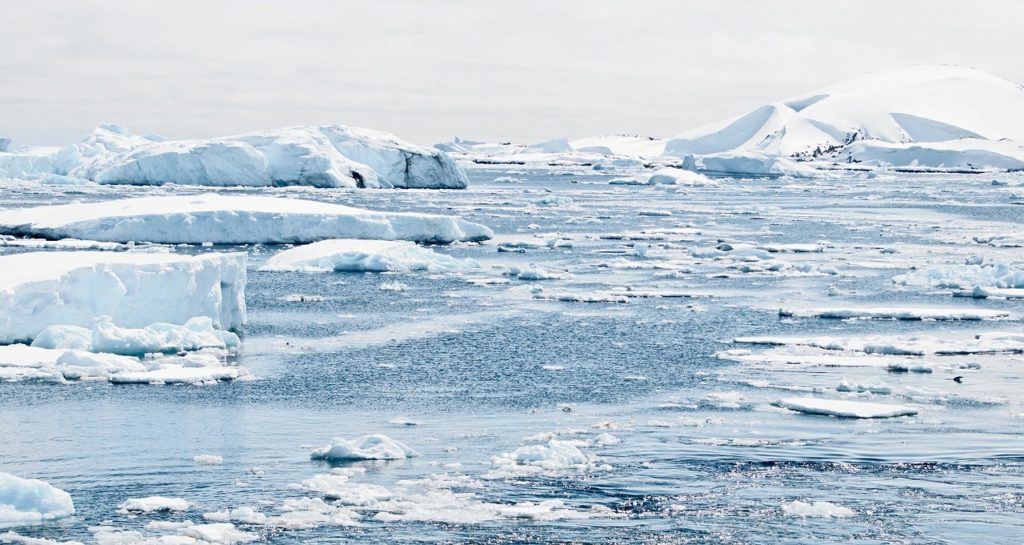For over a century we haved based most of our energy production on the burning of fossil fuels like coal and oil, increasing the concentration of atmospheric carbon dioxide (CO2) which levels today, according to the National Oceanic and Atmospheric Administration (NOAA) estimates, are higher than at any point in at least the past 800,000 years. The average temperature at the surface of the Earth depends on a balance between incoming energy from the Sun and the energy that bounces back into space. CO2 absorbs heat radiating from the surface and re-emits some of this back to Earth, causing additional heating of the planet. Some scientists are now talking about the need for more radical actions to stop potential catastrophes that could harm human civilization. These actions are known as geoengineering.
Geoengineering is controversial and not currently being performed as scientists debate over how it can be safely applied. The reason it is controversial is because it involves direct manipulation of the Earth’s landscape or atmosphere by human technology in an attempt to minimize or delay the impact of climate change. Examples of geoengineering include increasing stratospheric aerosols (e.g., injecting sulphur dioxide into the stratosphere to help form reflective clouds to increase solar reflection), ocean fertilization (supplying nutrients to enhance the growth of tiny plants that absorb CO2), and sequestering CO2 underground in aquifers or carbonate rocks
The climate of Earth is provided by the Sun, and the amount of sunlight absorbed by the Earth’s surface determines the average global temperature. Of the sunlight that reaches the earth, about 70% is absorbed by the surface and 30% is reflected away by features such as clouds, deserts, and glaciers. Every surface on earth absorbs and reflects energy at varying degrees, based on its color and texture. Dark-colored objects absorb more visible radiation; light-colored objects reflect more visible radiation. Shiny or smooth objects reflect more, while dull or rough objects absorb more.
Geoengineering might be used to remedy future threats using technology to modify the global climate. The melting of the Greenland Ice Sheet is one such threat which could increase sea level by ten meters or more. A possible goal of geoengineering would be to reduce the amount of sunlight absorbed by the Earth, providing a way to cool our planet. To accomplish this, we would need to increase the quantity of reflected sunlight. One proposed method is to alter the amount of glacial coverage on Earth, increasing the size of ice caps, like the Greenland Ice Sheet, to create a permanently cooler climate.
Increasing the size of the Greenland Ice Sheet is no small feat. It would require environmental factors that allow a net accumulation of moisture, and could also require a commitment of a thousand years or more, given current technologies. Geoengineering would need to decrease the amount of time required for ice formation. So, how much ice is enough?
By using a long-term geoengineering program like this, the Earth might become several degrees cooler than it is today and a range of larger ice caps could remain stable, buying time for humans to transition to efficient and renewable sources of energy. Researchers would also need to decide on an optimal average global temperature. How many degrees of cooling is enough given the amount of time we want to give ourselves? Geoengineering technology used in this way may act as a thermostat for the climate.
Overcoming the changes in the world’s climate is a huge challenge to humanity today and geoengineering approaches may offer some solutions. Such a feat as increasing the coverage of ice caps could require dedicated efforts at geoengineering for thousands of years and may also lead to undesirable side effects. But if the objective is to ensure a stable climate so that civilization can exist for millions of years into the future, then maybe some changes may be a small price to pay. Maybe we need to shift populations that currently reside in regions that would be covered in ice, reducing the total amount of habitable area on Earth, for example the entire Greenland population (about 56,000 inhabitants in 2016) or the population of the north end of Canada. Also, advancing ice could also bury some agricultural lands in the northern areas and make the planet an overall colder place, These actions are not trivial matters and would be a huge undertaking requiring international cooperation.
The truth is that the impact of civilization upon the global climate is not totally reversible, but we could use Geoengineering to extend our time, minimizing and slowing down the effect of these. So, for now, the main question for our future is how to steer toward a preferable outcome.


